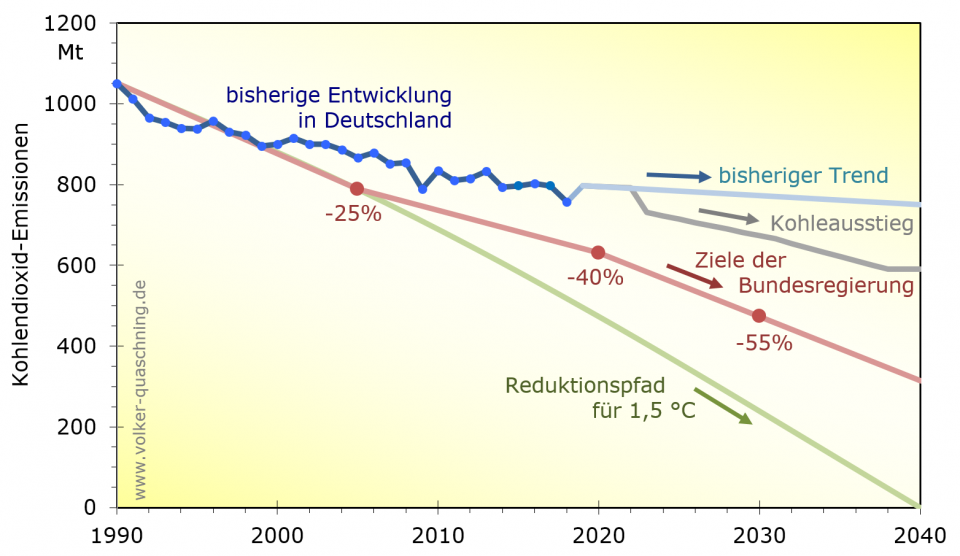Getting climate-neutral
Our service: We independently check your CO2 footprint / the greenhouse gas of your organization and thus strengthen your credibility.
We have summarized our expertise in a verico guide for a carbon footprint management system, which you are welcome to obtain free of charge from us. German version is available, Englisch version is in progress.
- Objectives of the German national climate protection programme in order to achieve the social goals.
- verico criteria catalogue for greenhouse gas compensation based on raised standards – including promotion of regional renewable energy plants
- verico services around the topic
1. With effect from August 30st 2021, the Federal Government of Germany has once again raised the national targets for the climate protection programme by 2030 – instead of 55%, 65% less greenhouse gases are to be emitted.
This is done within the framework of the international climate targets decided in the Paris Climate Agreement.

With this clear social objective, it is also clearly foreseeable that the economy will be increasingly challenged, i.e. by law, to make its contribution to climate protection on the way to national, European and global climate neutrality. From the point of view of industrial and commercial companies, however, it is becoming increasingly clear that additionally customers, employees and other stakeholders (such as the financial market) are increasingly paying attention to whether a company takes measures to meet its responsibility towards people and the environment.
A necessary tool for companies on the way to climate neutrality is an energy or climate management system.
Contents and aspects are:
- The company prepares a CO2 balance sheet.
- A carbon footprint management system continuously records and controls the relevant data and processes
- Continuously reducing greenhouse gas emissions 4.. Have greenhouse gas reports verified (independently) 5.. Use CO2 balance sheets for dialogue with all relevant stakeholders
We have summarized our expertise in a verico guideline for a carbon footprint management system, which you are welcome to obtain free of charge from us. Please feel free to contact us at office@verico.eu.
2. verico – Catalogue of criteria for greenhouse gas compensation according to raised standards – including promotion of regional renewable energy plants
SWM (municipal utility of Munich) offers the product “M/Kompensation Plus”. This product is intended to enable customers to offset their own greenhouse gas footprint through the use of commercially available CO2 certificates (CDM, Gold Standard, Verra). For this purpose, every ton of CO2eq emissions of the customer is “neutralized” by a corresponding certificate worth 1 t CO2eq. In addition, the customer participates in the promotion of additional renewable energy plants for a surcharge on each certificate,
- whose operation would be uneconomical after expiry of the EEG subsidy without further funding, which would possibly lead to a shutdown (so-called Ü20 plants), or
- in the case of new installations which would also be uneconomical without additional support due to specific plant characteristics, provided that this support is decisive for their construction and commissioning.
The product name “M/Kompensation Plus” is derived from the combination of the use of CO2 certificates and the promotion of renewable energy plants. In addition, C02eq compensation from international CO2 certificates is to be combined with an additional contribution to regional CO2eq reduction. In order to make this additional funding transparent for customers, verico SCE has developed a catalogue of criteria together with SWM. On the basis of these criteria, the subsidised plants, the additional CO2eq savings generated and the amount of electricity generated from the subsidised plants are checked at the end of each year and certified to customers who have purchased an “M/Compensation Plus” product.
This independent review in accordance with the verico criteria catalogue SWM guarantees the customer that he is acquiring a reliable, traceable product which – in addition to the usual CO2eq compensation on the market – promotes the generation of renewable energy from renewable energy plants.
The introduction and use of this standard thus contribute to the creation of added value in the neutrality of the greenhouse gas balance of the compensation customer and the promotion of local energy generation plants. The standard specifies requirements for the processes that are necessary for customer transparency. Furthermore, requirements for the quality of the data are defined, which are included in the balancing and the presentation of the added benefit. Certifications based on this standard are pure system certifications on a voluntary basis. Energy supplies or other energy products of Stadtwerke München or affiliated companies that have been tested on the basis of the standard cannot be declared certified or climate-neutral due to the certification.
The certification process does not include the greenhouse gas balance of the compensation customer and the completeness of the neutralization of this balance sheet through the acquisition of “M/Compensation Plus”. “
Are you interested in the described catalogue of criteria for Stadtwerke München? Feel free to contact us now at office@verico.eu
3. verico services around the topic
As verico SCE, we support companies on their way to climate neutrality, as your independent partner for the verification of your CO2 footprint.
Complementary services that we as verico SCE offer around this topic
- Verification of emission reports and allocation applications in the EU Emissions Trading System (EU-ETS) and the National Emissions Trading System (SESTA)
- Validation and verification of climate protection projects
- Certification of energy management systems according to ISO 50001
- Validation and verification of upstream emission reduction
In addition, we have summarized our expertise in a verico guide for a carbon footprint management system, which you are welcome to obtain free of charge from us.
As an independent testing body, which is authenticated in accordance with ISO 14065:2013, we are excluded from the reporting process.
As part of the verification process, we take a critical look at reporting processes and data and point out current weaknesses.
Getting climate-neutral Read More »




